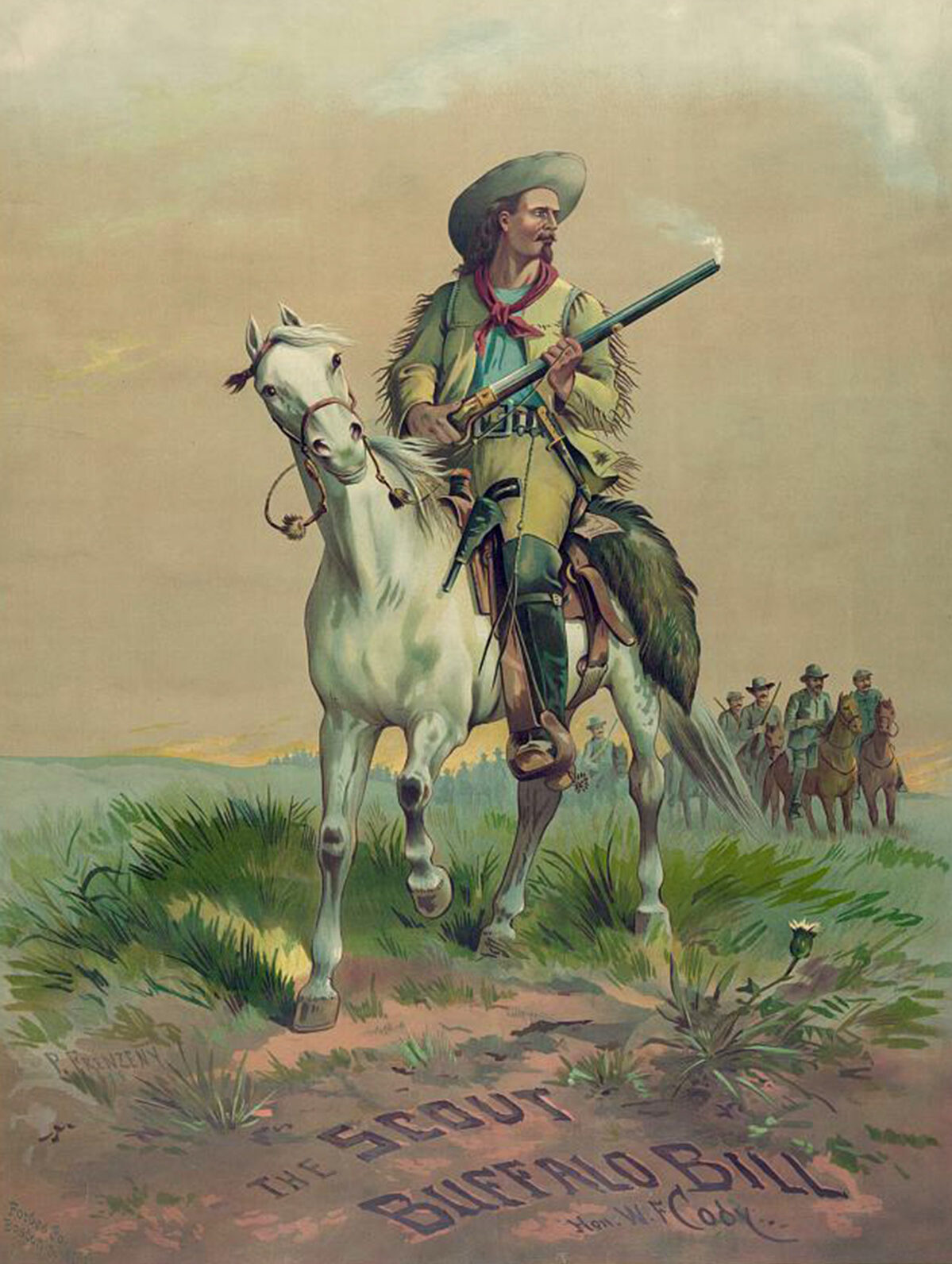When Buffalo Bill Cody was the world’s top showman, he presented a rousing blood-and-thunder exhibition that he never referred to as a mere show. Buffalo Bill’s Wild West opened in Omaha, Nebraska, in 1883 and continued until 1913, at which point Cody made a motion picture called The Indian Wars that put on film some of the same thrilling Wild West material, most notably the “first scalp for Custer.” Cody then toured with the Sells-Floto Circus for two years before spending one season with the Miller Brothers 101 Ranch Real Wild West in 1916. At the time of his death on January 10, 1917, he was known as a showman first, and the show even went on without him for one season. It featured heavyweight boxing champ Jess Willard and was billed as “Jess Willard (Himself in the Flesh) and the Buffalo Bill Wild West Show and Circus,” never mind that the late Mr. Cody had scorned the labels “show” and “circus.”
While audiences recognized Cody as the champion of showmanship, that title implied his life had been all about embellishment, fantasy and humbuggery. Well, there had been some of that, and romanticism to boot. But there had also been real-life harrowing adventures as a U.S. Army scout involved in 16 Indian fights. He helped defeat Cheyenne Dog Soldiers at Summit Springs, Colorado, in July 1869 (and may even have killed Chief Tall Bull, as he claimed), he received the Medal of Honor for bravery in an April 1872 skirmish (one of many times he demonstrated fearlessness), and he really did take a scalp (belonging to Cheyenne warrior Yellow Hair) for the late George A. Custer on July 17, 1876. “He became recognized as the country’s greatest showman, but few people realized he had been chief of scouts on the frontier,” says historian Paul Andrew Hutton. “The debunking had already begun in his lifetime and would continue to the present day—claims that he was a charlatan. The fact is, Buffalo Bill was the real thing, an extraordinary frontiersman who played an important role in the final Indian wars.”
While on tour with his Wild West, Cody became, as Hutton puts it, “a buckskin-clad goodwill ambassador, winning the hearts of the world as had no American since Benjamin Franklin.” Earlier, though, he had won the hearts of Army officers such as Phil Sheridan and Eugene Carr, as well as flamboyant writers such as Ned Buntline, action-craving Eastern playgoers and even a few theater critics. In his cover story, Hutton focuses on Cody’s pre-1877 activities—that is, before Buffalo Bill became a full-time showman. “The most fascinating thing about him to me,” says Hutton, “is that he was an authentic Western figure who became a popular actor on the stage and then went back to the Plains to again engage in heroic deeds, as if to re-authenticate his frontier persona before returning to show business.”
Hutton believes Buffalo Bill rode with the Pony Express and did most of the other things he claims he did in his 1879 autobiography, which, after all, was written before Cody became an unapologetic promoter. “He even makes fun of himself at times, the same way Davy Crockett did,” says Hutton. “There are some good historians and friends of mine who like to tear down Cody, because they don’t see every fact of his life documented on pieces of paper, but I think they’re wrong.”
No matter how much Cody fabricated before or after 1883, his expertise as an Army scout and hunting guide is indisputable, and the events in his Wild West reflected his personal experiences. There has been no celebrity like him. Wild Bill Hickok was a bigger name on the frontier, but he couldn’t cut it as a showman. In more recent times, Jimmy Stewart was an actor who became a combat pilot in WWII and then reinvented himself as an actor (starring in many Westerns), but he didn’t produce or direct his own movies. Audie Murphy was the most decorated U.S. serviceman in WWII, and he went on to play himself in his best movie, but he was also a gunslinger in many mediocre-at-best Westerns and never returned to combat. And as we all know, John Wayne never took a Nazi scalp for Eisenhower.





